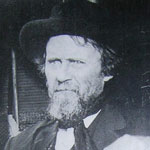 Osteopathy is a soft, manual, treatment method that brings the body back into balance. It treats not only the musculoskeletal system but also the organs and the craniosacral system. Osteopathy loosens blockades so that your self-regulation, and the self-healing forces of the body, can work again.
Osteopathy is a soft, manual, treatment method that brings the body back into balance. It treats not only the musculoskeletal system but also the organs and the craniosacral system. Osteopathy loosens blockades so that your self-regulation, and the self-healing forces of the body, can work again.
Osteopathy is more than just a form of treatment. It is a holistic medical approach and is considered a form of Complementary and Alternative Medicine.
Osteopathy was developed in the middle of the 19th century by the US physician Dr. Andrew Taylor Still (1828-1917). He searched for new methods of successfully treating and healing disorders without resorting to drug therapy or surgical intervention; and recognized that limitations of the movement of body structures and/or fluids may result in functional disturbances, ultimately leading to disorder and disease.
The osteopath is focused on finding disrupting physical blockages and resolving such blockages by manual technique. The goal is to restore the flow of vital energy thus allowing the body’s natural healing processes to restore health.
 „The osteopath seeks first physiological perfection of form, by normally adjusting the osseous framework, so that all arteries may deliver blood to nourish and construct all parts. Also that the veins may carry away all impurities dependent upon them for renovation. Also that the nerves of all classes may be free and unobstructed while applying the powers of life and motion to all divisions, and the whole system of nature’s laboratory.” A.T. Still
„The osteopath seeks first physiological perfection of form, by normally adjusting the osseous framework, so that all arteries may deliver blood to nourish and construct all parts. Also that the veins may carry away all impurities dependent upon them for renovation. Also that the nerves of all classes may be free and unobstructed while applying the powers of life and motion to all divisions, and the whole system of nature’s laboratory.” A.T. Still
